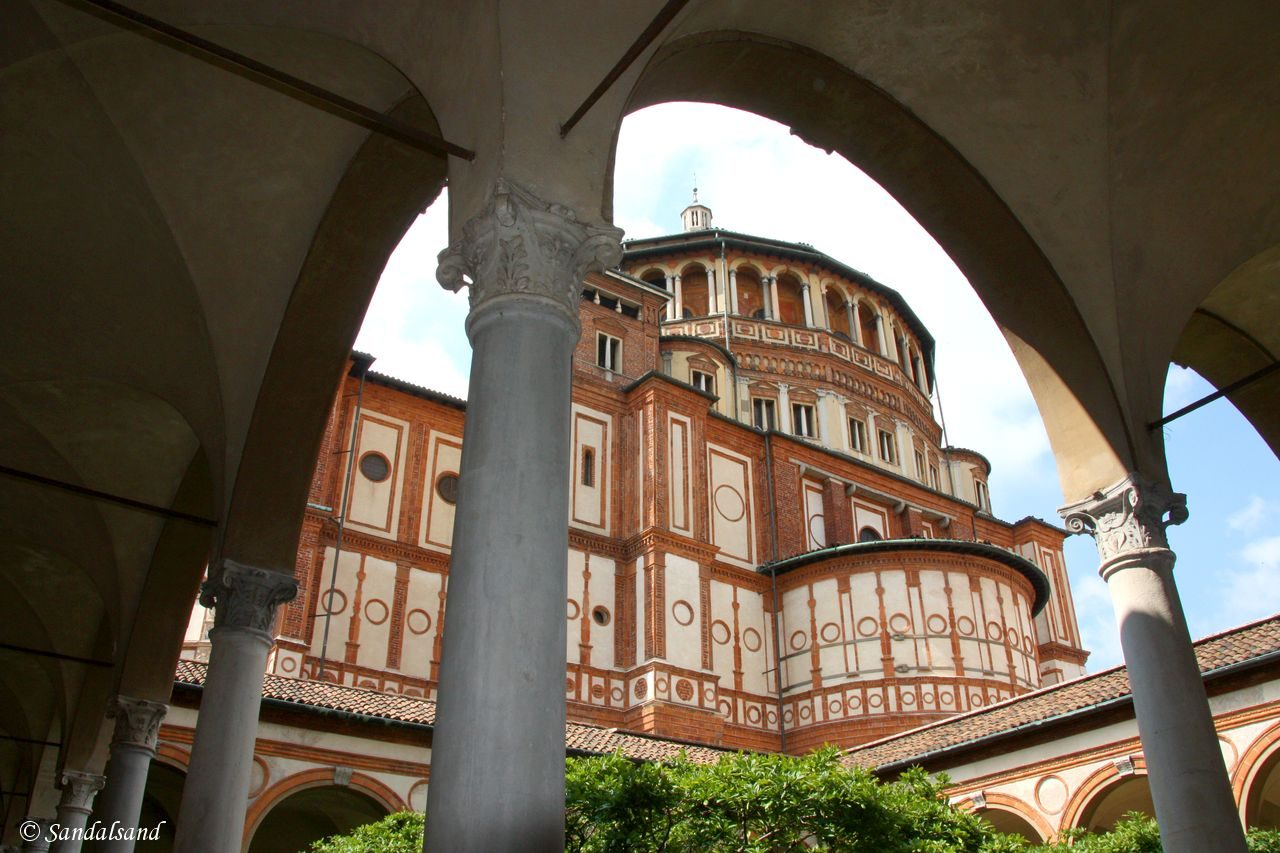The world’s second most famous painting, The Last Supper, was made by a universal genius. This gem hides inside a convent in Milan.
The UNESCO World Heritage List includes more than a thousand properties with outstanding universal value. They are all part of the world’s cultural and natural heritage.
Official facts
- Official title: Church and Dominican Convent of Santa Maria delle Grazie with “The Last Supper” by Leonardo da Vinci
- Country: Italy
- Date of Inscription: 1980
- Category: Cultural site
UNESCO’s World Heritage Centre’s short description of site no. 93:
“The refectory of the Convent of Santa Maria delle Grazie forms an integral part of this architectural complex, begun in Milan in 1463 and reworked at the end of the 15th century by Bramante. On the north wall is The Last Supper, the unrivalled masterpiece painted between 1495 and 1497 by Leonardo da Vinci, whose work was to herald a new era in the history of art.”
My visit
The universal genius from the little town of Vinci, Leonardo, lived in Milan for 17 years, employed by the local ruler Ludovico Sforza. Many would associate Leonardo with paintings (as well as his drawings of helicopters and war machines). However, there are only about 15 paintings left. On the other hand, two of them are the two most famous paintings in the world. The most famous is Mona Lisa (La Gioconda). The other is the fresco inside the dining hall at this convent in Milan.
Due to their popularity neither is easy to visit. I was able to have a close look at Mona Lisa at the Louvre Museum in Paris years ago, and was rather disappointed. This time I failed to get an ordinary museum ticket. One has to book it three months ahead. Consequently we had to settle with a guided group tour. That tour was by no means disappointing. It was actually very good, as described in my entry from Milan (coming up). The highlight was however “The Last Supper”.
The Last Supper is large, 460 cm × 880 cm. It is painted on the short end of the rectangular dining room (refectory) of the convent. The painting on the opposite side, Giovanni Donato da Montorfano’s Crucifixion (1495) is also worth a closer look. Visitors should also take some time to enjoy the exterior of the church and convent with an intriguing brickwork. There is a very nice courtyard and not least a lovely church.
A few reflections
Leonardo’s painting is amazing in several ways.
First of all it is fascinating to notice how the fresco’s perspective is a continuation of the rectangular room it is painted in. Likewise, it is interesting how the lighting adapts to the windows in the refectory, and how well balanced the grouping of the disciples are. We may study how well Judas incorporates into the picture, the facial expressions of the disciples, and also how Jesus’ traditional halo takes the shape of a window. And so on.
Second, it is kind of striking that it has survived for so many years. The artist experimented with the mural painting technique in such a way that it starting to deteriorate after a few years. Later on it survived being used as a shooting range for Napoleon’s soldiers and WW2 bombing. Furthermore, someone removed the feet of Jesus Christ on the painting to allow the construction of a door into the next room.
Conclusion: I am happy to have seen it. I am happy they are taking precautions to preserve the painting, even limiting us to fifteen minutes inside the room. The mural painting itself is extremely fragile. No photography is allowed inside the room.


